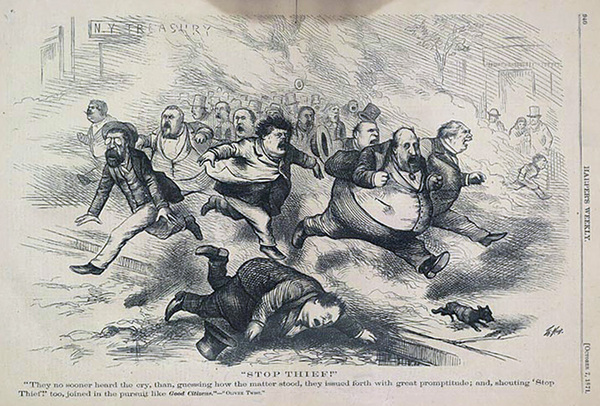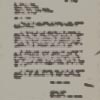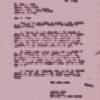Stop Thief!
Annotation
Thomas Nast's renowned illustrations in Harper's Weekly worked to expose the political corruption of the infamous machine run beginning in the 1860s by William "Boss" Tweed in New York City's Tammany Hall. Known for their corrupt dealings, the Democratic political machine used bribes, kickbacks, patronage, and sometimes engaged in voting fraud. At the same time, they often won immigrant support because they provided badly needed services to poor communities. Because Tammany Hall controlled voting, taxes, and contracts, reform groups believed that cleaning the election process was one way to help undercut the political machines (and take back political power). Nast's cartoon illustrates voting fraud while exposing the larger corruption of the Tweed Ring. This 1871 cartoon is captioned with a quotation from Charles Dickens' novel Oliver Twist: "They no sooner heard the cry, than, guessing how the matter stood, they issued forth with great promptitude; and, shouting 'Stop Thief!' too, and joined in the pursuit like Good Citizens."

Source
Thomas Nast, "Stop Thief!" Harper's Weekly, 1871.


